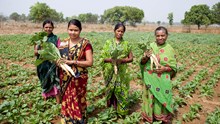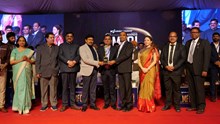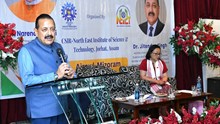
In the context of food, value addition involves enhancing the functional characteristics of seafood to provide superior quality, improved nutritional benefits, and affordability. It also includes the efficient utilization of nutrient-rich yet underutilized resources. Value-added seafood products range from minimally processed items, such as dressed or minced fish, to ready-to-eat and innovative packaged products with extended shelf life and diverse flavor profiles.
This approach aligns with the growing consumer preference for convenience, taste, and sustainability, while also promising better returns for stakeholders in the seafood industry.
Processes in Seafood Value Addition
Seafood value addition uses a variety of processes made to keep up with the demands of various markets:
-
Traditional Processes: Salting, drying, smoking, and pickling are age-old techniques used as ways of preserving and flavoring seafood. On their own, they do the job; however, these should be updated to improve hygiene conditions, efficiency, and quality.
Modern Techniques:
-
Freezing and Canning: This is primarily done to serve the purpose of extending shelf life while retaining nutritional values.
-
Surimi Production: A wet concentrate of myofibrillar protein, surimi is the precursor to widely popular products such as seafood sausages and analogs.
-
Thermal Processing: Results in high-margin convenience foods, but requires careful species selection because of the difficulties involved in textural properties.
-
Fermentation: Adds nutritional value and flavor, but is time-consuming
-
Extrusion and Dehydration: Develop intermediate-moisture foods - seafood-based bars, pastas, and snacks.
-
Innovative Packaging: Eco-labeling and intelligent packaging systems enhance product appeal and ensure quality, thus boosting consumer confidence.
Suitable Varieties for Value Addition
There are a variety of seafood species that are suitable for value addition. Lean fish varieties are best suited for surimi production, whereas high-value species such as tuna, lobster, and shrimp are preferred for thermal processing. Smoked or marinated farmed species - sea bass, pompano, and other species also developed because of the mild flavor nature and flexibility offered by these fish.
Underexploited species as well as the processing discards (heads, scales, viscera, and others) would provide untapped potential for the creation of high-value by-products: collagen, chitosan, and fish protein hydrolysates, among others.
Market Potential Seafood Items
Due to customer demands for sustainability, convenience, and nutrition, the worldwide seafood sector is undergoing fast change. Both local and international markets are seeing an increase in demand for value-added seafood items, such as prepared dinners and creative snacks. With its varied seafood resources and rich culinary legacy, India is ideally positioned to benefit from this trend. Products made from ethnic seafood that are based on traditional recipes provide niche markets with different marketing characteristics.
Integrating Seafood Value Addition into Agricultural Communities
Agricultural communities can be engaged in seafood value addition as a second source of livelihood by harnessing indigenous resources and local knowledge. For instance, fish farmers may expand their product lines to include pickled, sun-dried, or fermented products with the use of simple yet effective technologies.
Partnerships with government, NGOs, and private players may pave the way for training, funding, or access to linkages in the market. Moreover, efforts for waste management and utilization of by-products can enhance sustainability and profitability.
Seafood value addition holds great promise for transforming the seafood industry into a dynamic, sustainable, and inclusive sector. Innovative technologies, improvement in infrastructure, and community engagement can unlock the full potential of seafood resources.
This approach will not only bring about economic growth but also ensure nutritional security and environmental sustainability for a thriving blue economy. Coastal and agricultural communities are encouraged to explore this avenue as a viable and rewarding livelihood option.
















